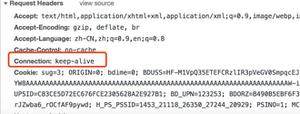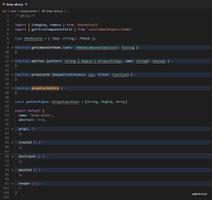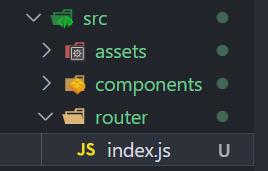vue keep-alive保存路由状态2 (高级用法,接上篇)

接上篇 https://www.cnblogs.com/wangmaoling/p/9803960.html
本文很长,请耐心看完分析。
4.高级用法,指定从什么组件进入才缓存,以及销毁缓存:先介绍我发现的网上一些博主写的有bug的方法,在介绍自己的方法。
假设这里有 3 个路由: A、B、C。要求:
1. 默认显示 A
2. B 跳到 A,A 不刷新
3. C 跳到 A,A 刷新
先上一些发现博客上有些博主写的实现方式:
方式1:有bug
在 A 路由里面设置 meta 属性:
{ path: '/',
name: 'A',
component: A,
meta: {
keepAlive: true // 需要被缓存
}
}
在 B 组件里面设置 beforeRouteLeave:
export default { data() {
return {};
},
methods: {},
beforeRouteLeave(to, from, next) {
// 设置下一个路由的 meta
to.meta.keepAlive = true; // 让 A 缓存,即不刷新
next();
}
};
在 C 组件里面设置 beforeRouteLeave:
export default { data() {
return {};
},
methods: {},
beforeRouteLeave(to, from, next) {
// 设置下一个路由的 meta
to.meta.keepAlive = false; // 让 A 不缓存,即刷新
next();
}
};
这样便能实现 B 回到 A,A 不刷新;而 C 回到 A 则刷新。但是问题来了:
1. 只要是从C到了A(A即为false),A在到B的时候也是false,B返回A后A才变为true。
这个方法没弄明白,true跟缓存的关系,只有首先设置了true才可以被缓存,而不是后设置true让他缓存下。
2. 如果是多页面就麻烦了,每个组件都得写,并且还不知道,to的组件是什么。
方式2:有bug - $destroy()销毁后就永远不会被缓存了
//在router的js里面 加上全局
Vue.mixin({beforeRouteLeave: function (to, from, next) {
// 省略若干代码this.$destroy();
next();
}
}
})
方式3:有bug。比较暴力的方法,已经很好的方法,根据源码看来缓存的组件都会设置一个cache属性,可以通过代码强行移除掉。缺点就是没有彻底销毁依旧占内存。
路由设置:
公共组件设置:
实现:
Vue.mixin({ beforeRouteLeave: function (to, from, next) {
// 默认是缓存的 在来清除
// 1.用tag标记控制 判断上下级
// if (from && from.meta.tag && to.meta.tag && (from.meta.tag-to.meta.tag<1))
// 2.直接用组件名字来写 不够通用
// if (from.path == '/docMng' && to.path == '/docMng/docDetail') {
// 3. 用包含关系来判断 通用
if(to.path.indexOf(from.path)!=-1){
}else{
// if (from && from.meta.tag && to.meta.tag && (from.meta.tag-to.meta.tag<1)){
if (this.$vnode && this.$vnode.data.keepAlive) {
if (this.$vnode.parent && this.$vnode.parent.componentInstance && this.$vnode.parent.componentInstance.cache) {
if (this.$vnode.componentOptions) {
var key = this.$vnode.key == null ? this.$vnode.componentOptions.Ctor.cid + (this.$vnode.componentOptions.tag ? `::${this.$vnode.componentOptions.tag}` : '') :this.$vnode.key;
var cache = this.$vnode.parent.componentInstance.cache;
var keys = this.$vnode.parent.componentInstance.keys;
if (cache[key]) {
if (keys.length) {
var index = keys.indexOf(key);
if (index > -1) {
keys.splice(index, 1);
}
}
delete cache[key];
}
}
}
}
this.$destroy();
// }
}
next()
}
})
此方法可以用了下面说下问题:
从A组件的详情(A1)直接跳到另一个组件(B),然后在从B到A会发现A没有刷新,按道理是需要刷新的。
方式4:比较好的解决方法,用到了keep-alive的 include属性。通过vuex动态控制include达到可缓存状态。
思路:一般设置缓存就是 从A1->A2 这个过程A1需要设置缓存,A1->B1一般是不需要的(tab切换暂不考虑,以后可能会在分析设计)。
通过vuex要缓存的组件存起来加载到include,来动态控制include。下面上项目截下来的图:
步骤一路由设置:我这里是用层级表示的路由。这里如果不用层级可以用标记来表示例如:tag1.0 tag1.1 tag1.2 tag2.... 用这个方法来表示的时候需要多处理一 下,这里不做分析了
步骤二vuex设置
步骤三组件内设置在公共main设置观察属性include属性。
步骤四在路由里面进行拦截
以上是 vue keep-alive保存路由状态2 (高级用法,接上篇) 的全部内容, 来源链接: utcz.com/z/379714.html








